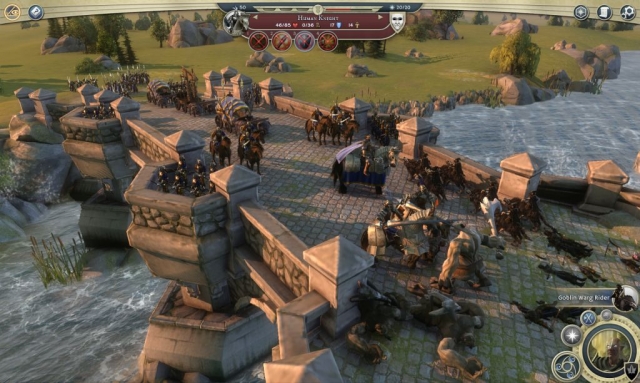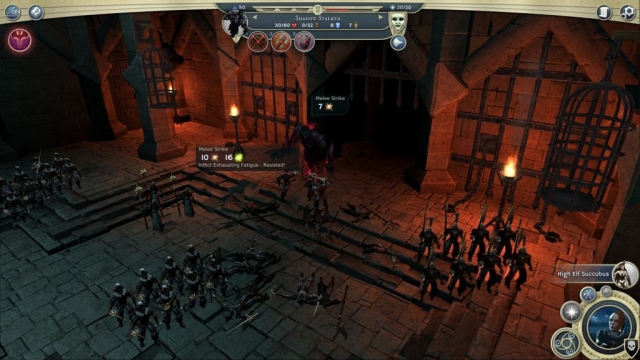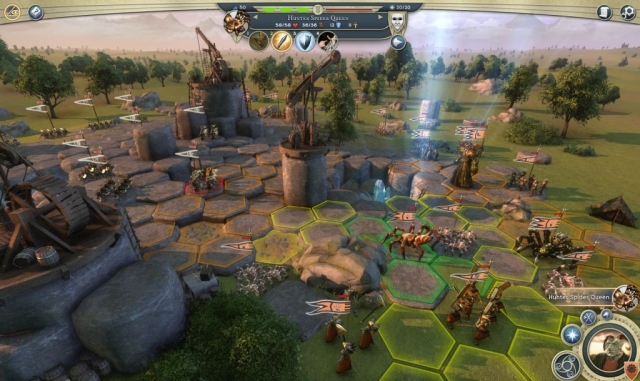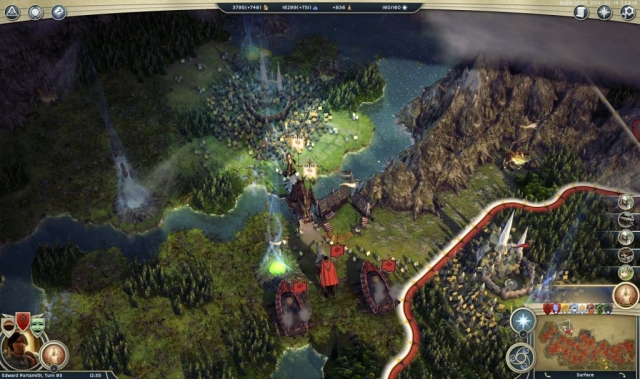Age of Wonders III
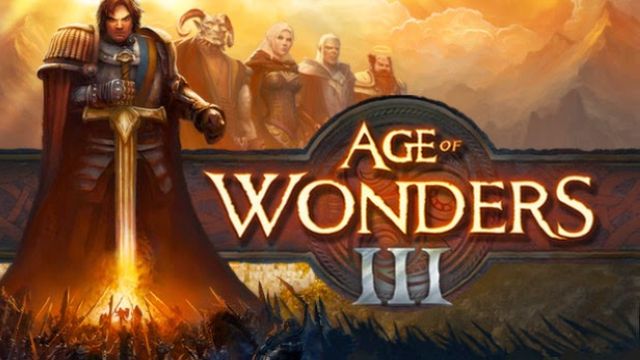
From my perspective, it’s always seemed that the moment Civilization broke onto the scene, developers have dreamed of creating the perfect fantasy-themed version of it. Starting with Masters of Magic and continuing on with mods and games like Fall from Heaven and Elemental: Fallen Enchantress, there’s clearly been a market for magic-based 4X gaming, though nothing has ever quite hit the nail on the head. While I’ve never played an Age of Wonders game before this third iteration, I was pleasantly surprised with how close it came to realizing its ambition. Still, I’m not quite sure it’s the holy grail of fantasy-Civ that everyone’s looking for.
One of the first things I noticed about AoW 3 is that there are almost no tutorials. It wasn’t a huge deal for me since I’ve been gaming for decades and could understand most of the basics from my own experience. But for someone new to the genre, there’s little help to be found. The elf campaign starts you out slowly and introduces new concepts piece by piece, but much of the minutia remains a mystery, even hours later. I’m still not sure how to manage the difference, in terms of gameplay effects, between climate and topography. There is an in-game reference manual, a la the Civilopedia, and some vaguely worded tool-tips when you hover over certain items. But all in all, you’re going to be trial-and-erroring your way through the game mechanics for a large chunk of time.
Once you start getting the hang of the game, though, it turns into a fairly polished experience. As in all 4X games, you have the standard components of exploration, city building, combat, a tech tree, and diplomacy. As in Fallen Enchantress (with which AoE 3 shares a huge amount of design similarities), the exploration component gets extra love due to the basic RPG mechanics present. Your heroes and troops all level up as they explore and fight their way through dungeons and quests, often finding equipable weapons, armor and steeds.
Another really neat feature is that most maps (and at your discretion on randomly-generate maps) have an “underground” component. Dotting the landscape are caves, which take you to a semi-labyrinthian subterra where you can fight bigger monster, find better treasure and even place fortresses and cities. Later on, when war becomes an inevitability, you not only have to consider your above-ground vulnerabilities, but also guard against sneak attacks coming from those cave exits. More than most 4X games, no city is every truly safe behind your front lines.
Speaking of combat, I have some extremely mixed impressions when it comes to army management. Coming from the Civilization series, where 4 allowed for unlimited “stacks of doom”, thus negating any true tactics, and 5, with its “one-unit-per-tile” rule, frustrating many a player, I can see that developer Triumph Studios attempted to find a middle ground. Units of any kind, be they heros or standard troops, can be grouped up to six at a time. For most small-scale skirmishes, this is an adequate solution but some annoying problems arise for the larger battles. For instance, when trying to take a goblin stronghold in the second campaign chapter, the AI had clogged most of the tiles around the city with full stacks of his most advanced troops and heroes. While that makes sense strategically, the end result is that I could only manage to bring two stacks (twelve total troops) at a time into battle with me, where they immediately got massacred, over and over. Eventually, I got tired of the load screens and drawn-out “battle is commencing” animation and simply threw stack after stack of soldiers at the log jam while auto-resolving, hoping I could whittle away at his impenetrable wall of demons. Alas, nothing really worked and ultimately I captured the city when the AI made the stupid move of pulling his armies away from the front lines. This is something that playtesting in the Alpha phase should have caught and the developers should have rethought their stacking/battle design.
As mentioned, though, most fights are smaller scale, only involving two or three stacks, and in these cases, the combat engine works pretty well. Similar to Fallen Enchantress and Heroes of Might and Magic, battles occur on a zoomed-in map approximating the terrain of the tile for which you are vying. Here, you can throw around magic, receive buffs or penalties from the terrain itself and contend with natural and artificial barriers. Overall it works exactly as you want it to, though there is the odd occasion of mis-clicking and sending your archers to go melee attack some spearmen due to a hinky ability selection toolbar.
Spells can also be used on the strategic map to directly attack enemy armies, buff or debuff cities and even provide special bonuses to your entire empire. Indeed, most of the research options in the tech tree involve learning new spells. It does get a little confusing as to why there are two resources you need in order to cast (spell power and mana crystals), but crystal production is so easy that it’s rare to run out.
I’m not the best at strategy games (I still only play Civ 5 on Prince), but even I can tell that the game needs a few balancing passes. Units abide by a tier system, so a tier four dragon is always going to kick the crap out of a tier one infantry unit. The problem is that this severely limits variety because who would even bother building units that get one-shot-killed? No, it’s always better to just train that tier four dragon over and over. Spells also seem a bit problematic, as I fought more than a few battles where some mass fear or charm spell made most of my army retreat or turn traitor. It’s frustrating that in the first turn, I’ve already lost and there’s very little I can do about it. Sure, I could gear my heroes specifically against this or that uber-spell, but there’s no way to counter all of them. I’m hopeful that Triumph Studios will release a few patches addressing these balance issues because when they happen, the fun factor drops precipitously.
Finally, again like Fallen Enchantress, Age of Wonders 3 allows you to customize your main hero for non-campaign games. The options include the character class (which plays a small role in your spell selection and other details), race (Human, Elf, Dwarf, Orc, Goblin and Draconian), sex, looks (the options are limited but sufficient) and a few traits like elemental affinity. Compared to FE, the customization options are pretty scarce. But I always love to customize my faction in games like this so I’m not really complaining, just wishing there was more of it.
Despite my nitpicks with combat and balance, Age of Wonders 3 is a solid title. The graphics are decent without being overly-taxing, the colors are vibrant, I didn’t run into many bugs, and the replay value is extremely high. Is it the one and future king of fantasy 4X gaming? Probably not, but it might be one of the best attempts yet.
Reviewed By: Brian Mardiney
Publisher: Triumph Studios
Rating: 80%
——————————————————————————–
This review is based on a digital copy of Age of Wonders III for the PC provided by Triumph Studios.
 Game Over Online
Game Over Online